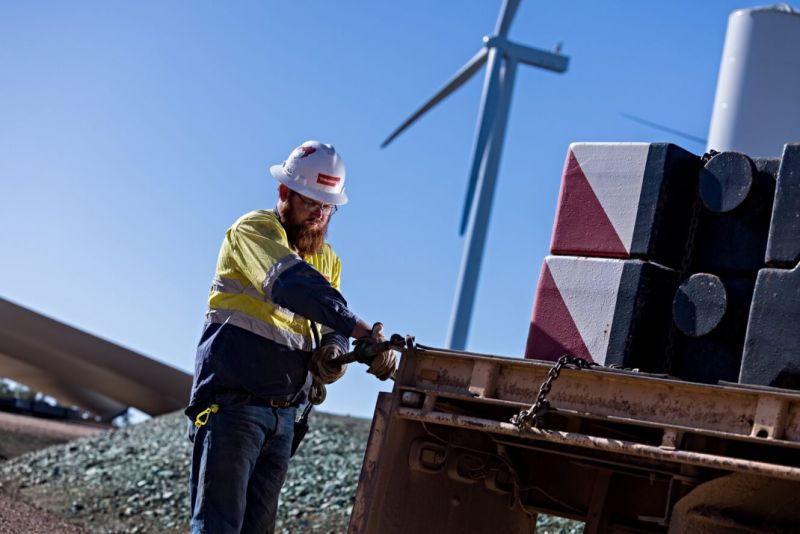How does wind energy work?
How does wind energy work?
How wind farm developments have the potential to meet the growing demand for clean energy in Queensland.
Wind is a huge potential source of renewable energy in Queensland and a large piece of the renewable energy puzzle. But how exactly does wind energy work and what are the requirements for wind farms in Queensland?
What is renewable energy?
First, let’s start with the basics.
Renewable energy is the term used to describe energy that’s derived from natural resources such as sunlight and wind, and replenished at a higher rate than they are consumed. Renewable energy sources are ones are that are plentiful and all around us.
How does wind energy work?
Wind energy is generated by converting wind currents into other forms of energy using wind turbines. Turbines extract energy from the passing air by converting kinetic energy from rotational movement via a rotor. The effectiveness of this conversion at any given site is commonly measured by its energy density.
Wind energy is primarily used for electricity generation, both onsite and for transport to the grid. It can also be used to pump bore water, particularly in rural areas.
By harnessing the power of the wind to generate electricity, wind energy offers a clean and sustainable alternative to fossil fuels.
Wind energy expert, Paul Cann says Queensland’s ample wind resources, provide a perfect environment for wind farm developments. ‘Queensland has some of Australia’s highest wind speeds particularly in Far North Queensland and along the Great Dividing Range,’
‘Queensland also has proven ports infrastructure and tested transportation routes in the North, Central and South-Eastern regions which have been serving the wind industry for many years since the early adoption of wind technology in the year 2000, with the Windy Hill Wind Farm in Ravenshoe.’ Paul said.
Queensland and renewable energy
Queensland has high quality and nationally competitive wind resources. Recent improvements in wind turbine technology have assisted in unlocking Queensland's wind resources, and there are a number of major wind farms in Queensland now under development.
What happens when a wind farm is decommissioned?
Wind farms typically have a lifespan of 20 to 30 years, after which the wind turbines are either updated or the materials are recycled or repurposed. Wind turbines are typically made from recyclable materials such as steel, aluminium, copper and cast iron.
When a wind farm is decommissioned, it raises the importance of reducing and reusing waste.
That’s why growing Queensland’s recycling and resource recovery industry is one of the focuses of the Queensland new-industry development strategy.
Not only is it good for the environment, it creates jobs for Queenslanders too.
How are wind farms assessed in Queensland?
In Queensland, wind farm developments undergo an impact assessment process to ensure their viability and minimise environmental impacts.
The government's Department of State Development, Infrastructure and Planning oversees this assessment.
Developers are required to submit comprehensive proposals detailing how a project complies with state assessment criteria. These criteria ensure that environmental impacts are minimised as well as noise, visual amenity, construction traffic and aviation safety are considered.
Consultation with local communities, landowners and other stakeholders is crucial when proponents are developing up project proposals. To help the assessment process, the government has developed guidelines and frameworks, such as the State Development Assessment Provisions (SDAP) and updates to the State Wind Farm Code 23 (![]() 154.4 KB) and the planning guideline for State code 23: Wind farm development (
154.4 KB) and the planning guideline for State code 23: Wind farm development (![]() 4.5 MB).
4.5 MB).
These documents outline the criteria, standards, and requirements that developers must meet. They ensure that wind farm developments adhere to specific planning, environmental, and social parameters.
Wind farm developments in Queensland are importantly contributing to state and national renewable energy targets.
These targets aim to increase the overall share of renewable energy in the state's electricity generation as part of Australia's commitment to combat climate change and reduce carbon emissions.
The move to clean energy across the globe could create future jobs right here. Queensland is in an ideal position to benefit from job growth and economic opportunities from the move to clean energy. The Queensland Government wants to hear your thoughts on future jobs and industries in your area. Learn more about decarbonisation opportunities in Queensland, or view updates to the wind farm development code and planning guidance.

Last updated: 31 Jan 2025

